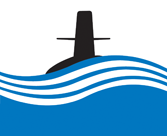
World War II
World War II
Brisbane
During World War 2 approximately 800 US service personnel were based at Capricorn Wharf at New Farm (Teneriffe) in Brisbane. The submarine bases at Fremantle and Brisbane played an important part in the war effort. Admiral James Fife was the commander of the American submarines operating out of Brisbane.
The US Navy Officers Barracks were located on the corner of Ann Street and Commercial Road. After the war the wooden building became a barracks for the nurses working at the Greenslopes Repatriation Hospital. The nurses were transported by cars from the Government Motor Pool in McLachlan Street, Fortitude Valley.
Capricorn wharf was built between 1907 - 1909. After WW2 it changed names a number of times as it changed owners. It was called Capricorn-New Wharf in 1965 when Capricorn Stevedores leased the wharves. It was purchased by Dalgety Wharves in 1968. The Royal Australian Navy purchased the wharves in 1982 and it became known as HMAS Moreton North. The area was purchased by the Brisbane City Council in 1988 and was then renamed as Capricorn Wharf to avoid confusion with the nearby HMAS Moreton.
In early 2000 the wharf and surrounding areas were dismantled to make way for 23 new waterfront detached houses and 8 townhouses which are likely to go on the market at $1.1 - 1.6 million. Nearby, two large former wool stores have been converted into apartments. The redevelopment will include the retention of some significant heritage items such as some stone gate posts and walls, a bomb shelter, fire hydrants and a small heritage building. One of these is the Elder Smith & Co. Limited Wool Store.

Six submarines berthed at Capricorn Wharf at New Farm
in Brisbane outboard of their Submarine Tender
Fremantle, Western Australia
Before the Japanese attack on Pearl Harbor, the US Navy's Asiatic Submarine Fleet (29 submarines) had been based in Manila in the Philippines along with 3 cruisers, 14 destroyers and a number of smaller vessels.
When the war started the Japanese bombed the Navy Base at Cavite quite extensively. The submarines were operating near the Philippines at that time. Captain John Wilkes who had been Commander SubsAsiatic Force was due to return to the States prior to the start of the war with Japan. Admiral Thomas C. Hart, the Commanding Officer of the Asiatic Fleet told Wilkes he was staying.
Captain Wilkes was given command of the six "S" type and some other Fleet type submarines and told to use facilities at Soerabaja in Java.
Captain John Fife was ordered to proceed to Darwin to establish a new Submarine Headquarters and a repair base where the submarine Tender USS Holland (AS3) would be based.
It was soon realised that Darwin, with its high tides, was unsuitable for submarine operations and was too open and hence could be easily mined. USS Holland (AS3) was then relocated to Tjilaljap in Java, which also proved unsuitable.
All three locations were often bombed by the Japanese. Java was then eventually taken by the Japanese leaving the Asiatic Submarine Force without a base. Exmouth Gulf in Western Australia was also considered for a while as a likely contender for a new Submarine Base. The sub fleet sank only three merchant ships during December 1941. USS Sealion (SS195) was sunk by the Japs while it was moored at the wharf in Cavite Navy Yard. They only sank another 3 Japanese ships in January 1942 and Submarine S-36 was lost in the Makassar Straits. Admiral Hart requested to be relieved of his duties.
Finally on the 3 March 1942, the USS Holland (AS3) arrived in Fremantle to establish the new Fremantle Submarine Base as home for 8 submarines of the Asiatic Fleet. The officers of the submarine command started to arrive in Fremantle and finally started to form a united command. Captain Wilkes ordered that two large wheat loading sheds on the wharf be leased. They were each 800 feet long and 50 feet high making them very suitable for their submarine workshop space. The area was also serviced by a railway line which was ideal for their operation. They also established an Auxiliary Submarine Base at Albany further south on the Western Australian coast.
Exmouth, Western Australia
In late 1942, the US Navy had asked the Australian Government to build an airfield near a future submarine base at Exmouth Gulf. The site for the airfield was selected at Yanrey and the War Cabinet approved its construction.
The submarine tender USS Pelius spent some time at Exmouth Gulf tending submarines that used it as a temporary base.
After two Japanese raids on Exmouth Gulf on 20 and 21 May 1943, the US Navy decided to abandon their submarine base there and move down to Fremantle. The base was also open to damage from the cyclones that hit the coast at that time of the year. The RAAF maintained their airfields at Learmonth and Yanfrey after the US Navy left the area.
Acknowledgements
Information on this page supplied courtesy of ozatwar.
